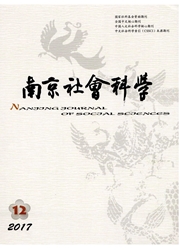

 中文摘要:
中文摘要:
在古典假设及卡尔多经济周期模型的基础上,本文构建了一个包含家庭与企业的两部门经济周期波动模型。首先,将工资收入用于消费,资本性收入用于储蓄这一古典假设与卡尔多非线性函数思想相结合对模型中的消费、储蓄、投资三个函数进行重新界定;其次,卡尔多模型中储蓄投资曲线的关系在本模型中表现为企业每一期的利润决定了经济脱离一般均衡后的运行状态,一旦经济脱离一般均衡状态,企业利润的变动将引起投资的变化,投资在长期中向资本存量的转化使得工资总额与资本存量及总收入的结构比例关系随之改变.收入流量与资本存量的结构失衡最终导致经济形成周期波动之势。
 英文摘要:
英文摘要:
Based on classical hypothesis and Kaldor' s economic cycle model, this paper constructs a two-sector economic cycle model including family and enterprise. First, on the basis of Kaldor' s thinking of non-linear function and the classical hypothesis, we redefine the function concept of consumption, savings and investment. Second, the relation between savings and investment in Kaldor's model is regarded as the relation between profit of enterprise and economic running. When the economic running is departed from the general equilibrium state, the change of profit will cause the change of investment. Last, in the long term, when the investment has transformed into the capital stock, the pmpertion between the wage share and the capital stock will change. Due to the proportional imbalance between income flow and capital stock, economic running will present the trend of cyclical fluctuation.
 同期刊论文项目
同期刊论文项目
 同项目期刊论文
同项目期刊论文
 期刊信息
期刊信息
